Kingdom Travels
A date with history at Al Murabba Palace
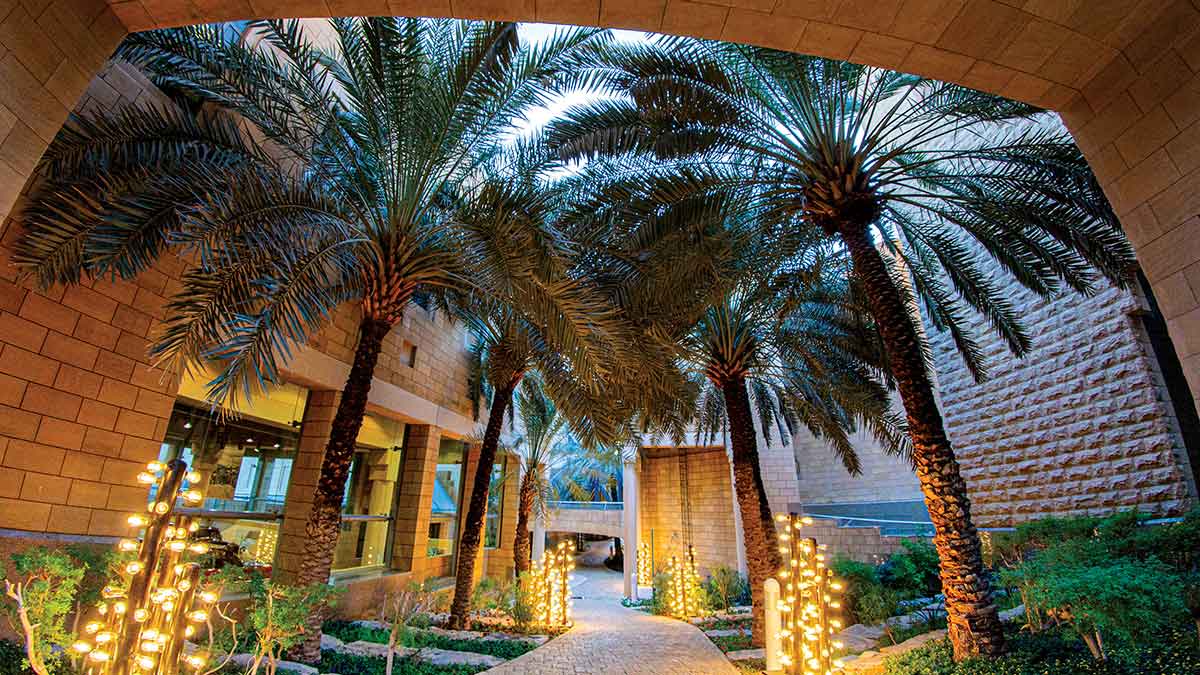
Global February 01, 2021 - By
King Abdulaziz’s former home highlights treasures of the past.
Two kilometers north of the old town of Riyadh sits a restored royal palace in which some of the most important decisions in the Kingdom’s history were made, including the issuance of the national currency (the Riyal), and the establishment of formal schooling.
Al Murabba Palace is the former home of King Abdulaziz and his family. Construction on the first palace built outside the old city wall began in 1936. The king moved in 1938 and it was from here that he managed the affairs of the Kingdom until his passing in 1953.
The name of the palace refers to the square shaped towers (the word murabbar means square in Arabic). It is located within the King Abdulaziz Historical Center block in the Al Murabbar neighborhood, and two kilometers north from Riyadh old town, which contains Al Masmak Fortress.
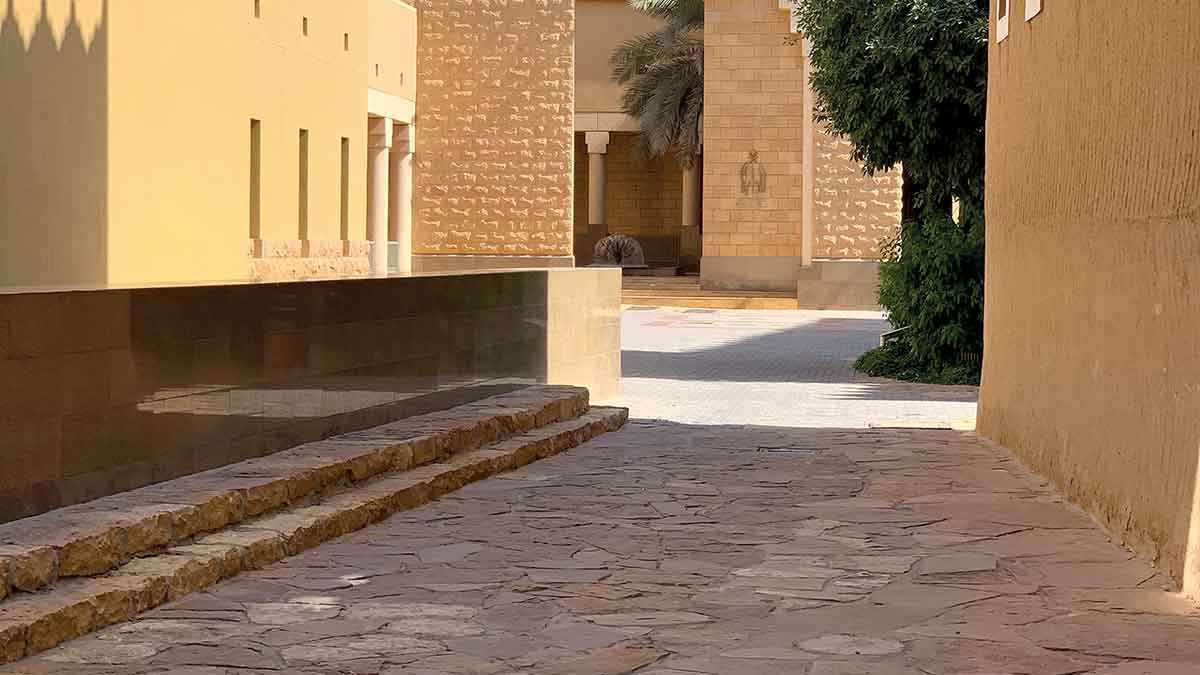
Al Murabba Palace is built from adobe blocks, rocks, palm fronds, and tree trunks, adhering to traditional local architecture. It has two floors, each consisting of 16 rooms, and a beautiful courtyard, according to the nearby King Abdulaziz Foundation for Research and Archives.
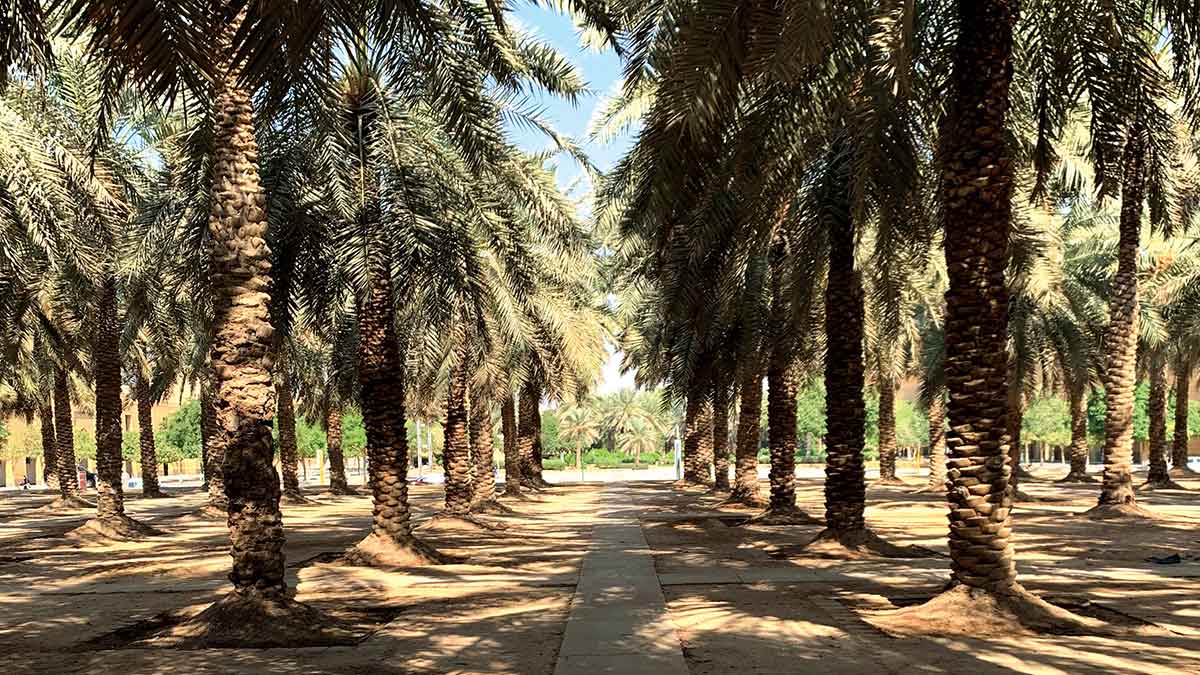
Those visiting the palace will be delighted with its gardens. In the past, this land used to be farmed during the rainy season. Walking toward the palace is an experience in itself: people go through narrow alleys among buildings with traditional Najdi architecture and numerous towering palm trees providing shade.
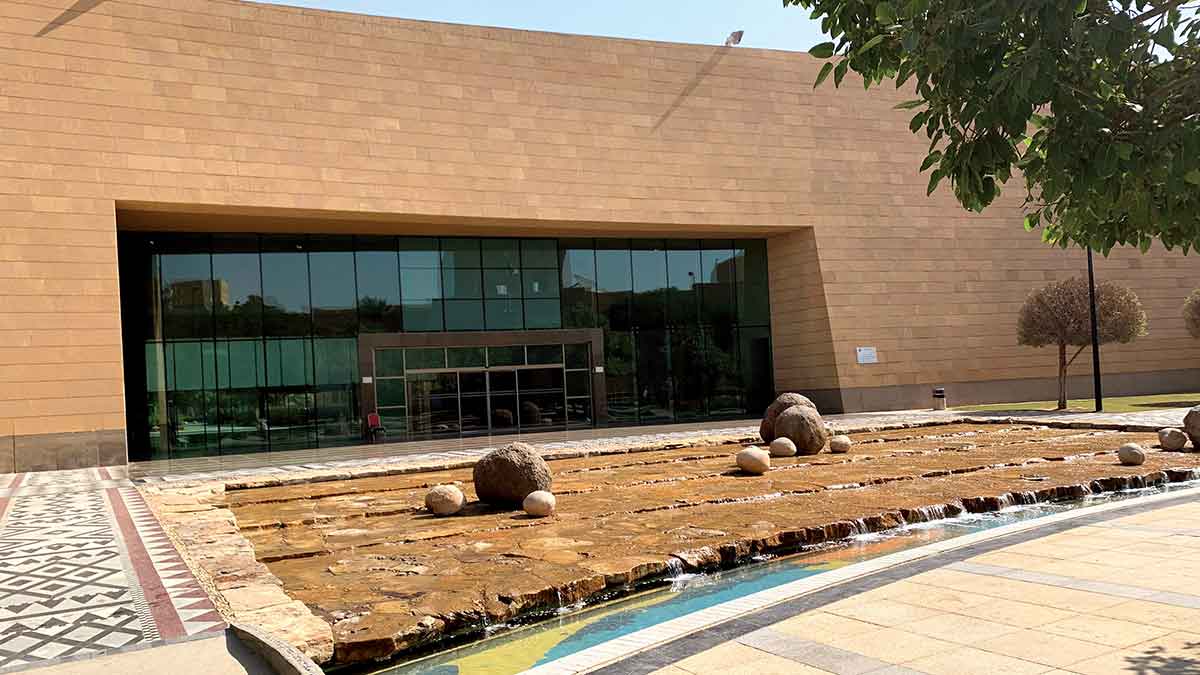
The National Museum
A 10-minute walk east from the palace is the National Museum, which contains 3,700 historical artifacts from across the Kingdom. It was completed in 1998 with a total built area of 28,000 m2, according to the museum’s website.
There are eight permanent exhibitions with subjects ranging from historic civilizations in the 4th millennium BC to early Saudi states. One of the exhibitions displays pottery, petroglyphs and weapons from the various civilizations that flourished across Arabia prior to Islam. Some of these artifacts show how ancient inhabitants interacted with other civilizations, such as the Greeks and Assyrians.
Additionally, the museum has exhibitions on Medina and Makkah, which contain models of the holy two mosques along with historic artifacts. (Check before visiting as COVID-19 precautions may have impacted access.)
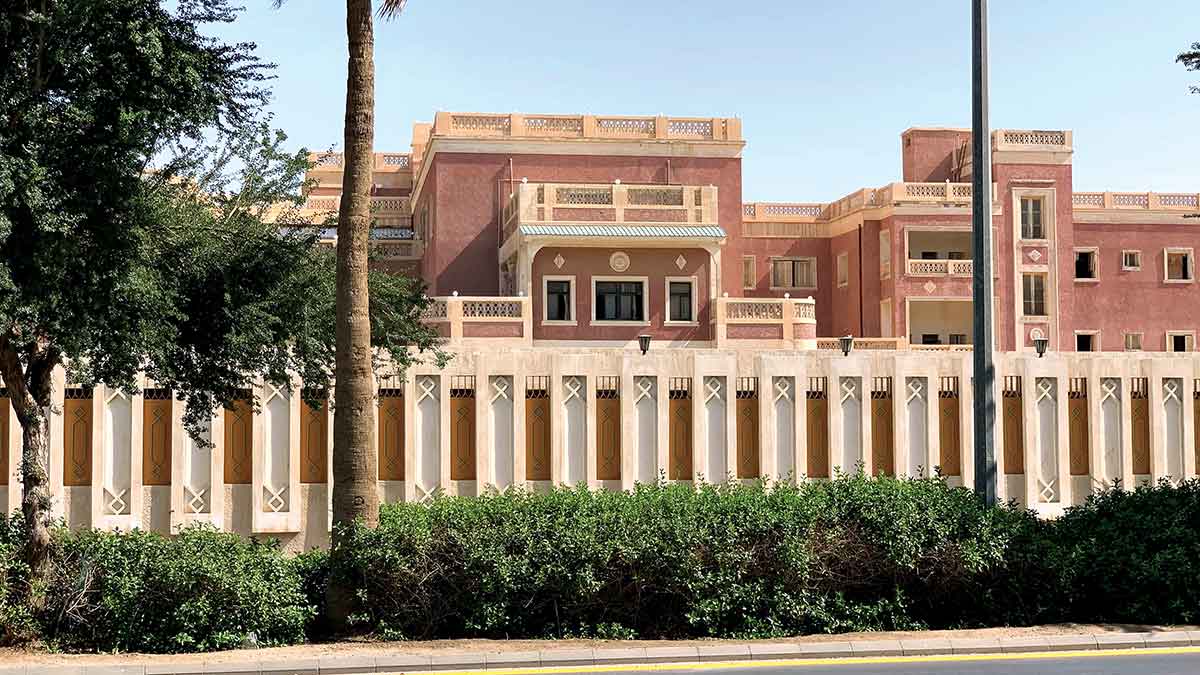
A walk in the park
South of the palace and across the street, lies Al Yamamah Park with its lovely trees and walking trails. This is connected to the Red Palace, which King Abdulaziz requested be built for his son King Saud in 1943, according to the Saudi Press Agency. Years later, the palace hosted the Council of Ministers. The name refers to the extensive use of red on its walls. Currently, the building is unoccupied, and is not open to the public, but visitors can catch a glimpse of the building through the closed gate or over the external wall.
In short, visitors will be charmed with the enchanting garden, history, and antique buildings of Al Murabba’s historical area.



